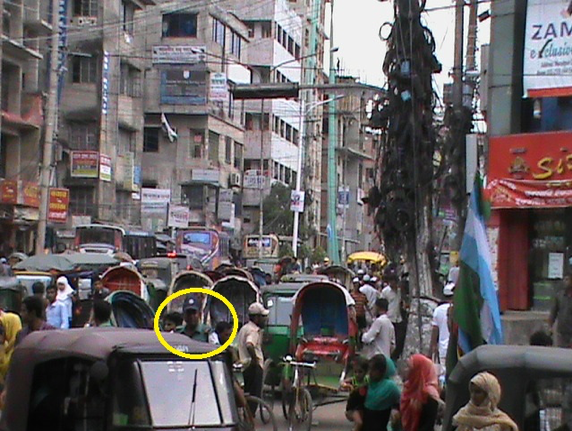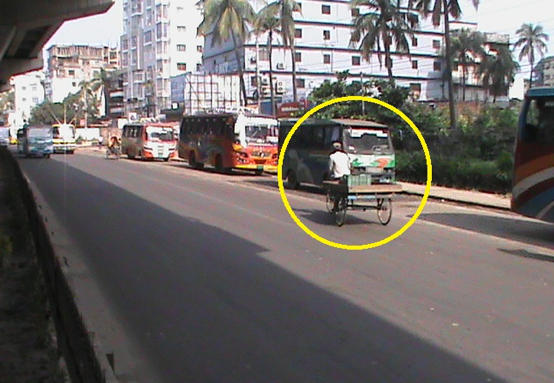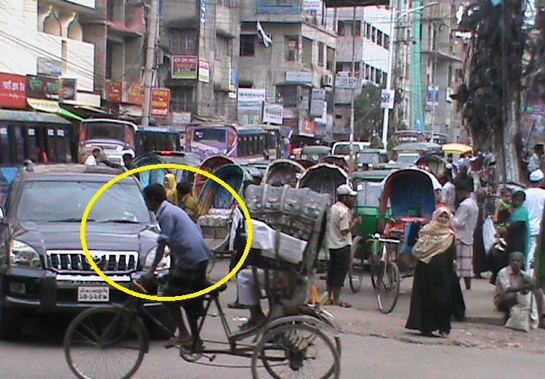Importance of a Dedicated Lane for Non-Motorized Vehicles In Chittagong: A Study Of Muradpur Area Of
- Nayla Akter
- Jul 5, 2018
- 3 min read
Bangladesh, ranked 10th in the world, has a population of 1115.62 people per square kilometer (source: worldpopulationreview.com, 2018). In such a populous country limited resources invested for the development of transport facilities, the rapid population growth together with limited space available for new roads, coupled with the rapid rise in transport demand, existence of a huge number of non-motorized vehicles on roads, lack of application of adequate and proper traffic management schemes are producing severe transport problems in almost all the urban areas of Bangladesh. But studies have been carried out in only Dhaka city of Bangladesh and hence there is a couple of roads having separate lane for non-motorized vehicles in Dhaka. But no survey or study has been done in Chittagong. So there is a lack of such facilities which results to a great amount of traffic congestion in some important points of Chittagong like New Market, Station Road, GEC Circle, Muradpur Circle, Bohadderhat, Sholoshohor, Chalkbazar, Chittagong College area, Anderkillah, Agrabad, Alonker point, CEPZ point, Kotowli point, Karnaphuli Bridge area, Oxygen point. A detailed study had been done in the Muradpur Circle. The methodology used for this study is questionnaire survey and manual speed calculation of motorized and non-motorized vehicles in Muradpur intersection. Data was collected for this study manually for a period of 10 hours on 4th June, 2018 from 6:30 am to 4:30 pm with an interval of 15 minutes. Besides a questionnaire survey was conducted on about 102 pedestrians.
From the above figures it’s clear about the attitude of the drivers of non-motorized vehicles towards the rules and regulations of traffic system. A survey report shows that, according to 36.3% pedestrians, drivers of non-motorized vehicles are least bothered about the traffic rules and according 27.5% pedestrians, they have a competitive attitude during movement. Being least bothered about the traffic rules they are driving the vehicles through the wrong direction (shown in Figure 1). Besides they are not obedient to any traffic signals which might lead to direct collision with the motorized vehicles (shown in Figure 2). Questionnaire survey shows that 37.5% pedestrians had experienced major or minor accidents while availing non-motorized vehicles. Survey report shows that according to 53% pedestrians, the main reason behind such behavior of the drivers is the improper planning of the city development and according to 47% it’s the inadequacy of the traffic police. But a scenario of illegal parking had been seen in Muradpur intersection in presence of a traffic police in Figure 3 which makes the existing narrow roads narrower.
A study on the speeds of the motorized vehicles like bus, car, CNG and tempo and of the non-motorized vehicles like rickshaw, van and cycle had been done. The speed of the vehicles through the roads of Muradpur intersection obtained through that study had been shown below:

Observing the above tables it can be found that the average speed of the non-motorized vehicles( rickshaw, van, cycle) ranges from 2 m/s to 4 m/s, whereas that of the motorized vehicles( bus, car, CNG, tempo) ranges from 4.5 m/s to 6.5 m/s. So it can be seen that the speeds of the motorized and non-motorized vehicles don’t coincide with each other. As such having different speeds it becomes difficult to ensure a smooth free flow through our highways.
At such a situation separating the non-motorized vehicles from the motorized ones would improve the situation to a great extent. The speed of the motorized is being reduced due to the travelling in the same lane with the non-motorized vehicles. But dedicated for the motorized and non-motorized vehicles (NMV) would ensure movement of vehicles having similar speed. As a result free flow can be maintained in all the lanes. Besides organized NMVs would be bound to follow the traffic rules as these are not allowed to barge in with the motorized vehicles. This can reduce the rate of accidents of NMVs too.













Commenti